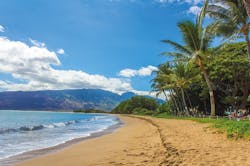After Aloha state Gov. David Ige reiterated his support for microgrids and signed legislation calling for a microgrid services tariff last week, Hawaii regulators were quick to open up a proceeding to establish the new utility rate.
Docket No. 2018-0163, currently before the Hawaii Public Utilities Commission, applies to Hawaiian Electric, Hawaii Electric Light and Maui Electric, collectively known as the HECO companies.
The commission is inviting stakeholder comment within 20 days of the order filing on July 10th. After the deadline, the commission will establish a statement of issues to be addressed in the docket, along with a schedule for proceeding.
The conversation began after the governor signed Act 200 into law last week, which seeks to establish greater structure around microgrid “interconnection and the value of microgrid services” through the use of a microgrid services tariff.
The act references the fact that Hawaii is more vulnerable than other states to disruptions in its energy systems due to extreme weather events, concluding that “microgrids can provide valuable services to the public utility electricity grid, including energy storage and demand response, to support load shifting, frequency response and voltage control,” among other benefits, including energy resiliency.
Not only can microgrids serve as backup power in an emergency, but they also can work to facilitate “the achievement of Hawaii’s clean energy policies,” according to the legislation.
Hawaii’s Act 200 states that “the use of microgrids would build energy resiliency into our communities, thereby increasing public safety and security.”
To prove its point, the legislature referenced Puerto Rico, and its government’s recent commitment to incorporating microgrids while rebuilding its energy system after the devastation of Hurricane Maria in 2017. Puerto Rico has also made recent moves to establish regulations addressing microgrid development. In fact, in a recent discussion of his Energy 2.0 plan, Puerto Rico Gov. Ricardo Rosselló said, “We want microgrids everywhere.”
Hawaii is no stranger to microgrids either. For example, the Schofield Generating Station has the capacity to island from the grid in case of an emergency outage, and provide electricity to Schofield Barracks, Wheeler Airfield and Kunia Field Station — an example of a microgrid for mission-critical facilities. And earlier this year, University of Hawaii Maui College announced it plans to go 100 percent green — likely a first-of-its-kind on a college campus — thanks to a solar microgrid equipped with 42 MWh of energy storage that serves five campuses.
Hawaii’s Act 200 also states that the Natural Energy Laboratory of Hawaii authority has “the potential to operate a microgrid,” and may be named as the first microgrid demonstration project after the establishment of the microgrid services tariff.
Track news about microgrids in Hawaii. Subscribe to the free Microgrid Knowledge newsletter.







